#Bernardino Pires
Text

Bernardino Pires - Porto, Portugal
12 notes
·
View notes
Text

Bernardino Pires, Ponte da Arrábida em construção/Arrábida bridge under construction, Porto, Portugal, 1963
http://industrias-culturais.blogspot.com/2022/03/bernardino-pires_9.html
14 notes
·
View notes
Text

Bernardino Pires, Construção da Ponte da Arrábida, Porto, Portugal, 1963
2 notes
·
View notes
Text
Brazilian surnames — part ii

List of surnames to inspire your Brazilian characters. These surnames are the most common in Brazil and trace their roots back to Portuguese colonisation, ancestry, and immigration (source).
More surnames!

Letter A
Abel
Abreu

Letter B
Barros
Bernardino
Bravo
Bruno

Letter C
Cabral
Calvo
Capela
Cardoso
Castelo
Chaves
Clemente
Coelho
Constantino
Crespo
Cruz
Cunha

Letter D
Da Costa
Delgado
Dias
Duarte

Letter E
Evangelista

Letter F
Feliciano
Félix
Franco

Letter G
Gil
Gouveia
Guerra

Letter L
Lobo
Lopes | Lopez

Letter M
Machado
Madeira
Marques
Matos
Mendes
Miranda
Monte
Moreira
Moreno

Letter N
Nogueira
Nunes

Letter P
Pacheco
Paredes
Pinto
Pires

Letter R
Ribeiro
Rico
Rios
Rocha
Romão

Letter S
Salvador
Santana
Santiago
Serafim
Serra
Simões
Soares

Letter T
Tavares
Torres

Letter V
Vale
Vargas
Vilar

#brazilian surnames#writeblr#surnames#surnames list#brazilcore#character building#character development#names#writing ideas#writing inspiration#creative writing#writing community#writing tips#mine
2 notes
·
View notes
Text
DIA12 DE MAIO DE 2024 : “UMA VIDA NO TEATRO” DE DAVID MAMET NO TEATRO ABERTO . NO FECHO DEVUMA SEMANA INTENSA : na companhia dos Caldeira Pires um “clássico” do norte-americano David Mamet (n. 1947), autor de Glengarry Glen Ross e Oleanna, para a estreia na encenação de Cleia Almeida, atriz bem conhecida do teatro e do cinema português. Em Uma Vida no Teatro, texto de 1977, Mamet compõe uma carta de amor, muitas vezes sarcástica, ao teatro e à vida.
Em cena, estão dois atores, o veterano Robert (Alfredo Brito) e o promissor John (Vitor Silva Costa). Entre ambos estabelece-se uma “relação de competição e camaradagem”, ao estilo professor-aluno, que sucede “dentro e fora de cena”. Se um é jovem e vive inebriado pelo crescente sucesso, embora esteja absolutamente desperto para aprender; o outro vive obcecado pelo perfecionismo, mas a idade tornou-o cada vez mais ansioso e consciente da sua própria finitude.Peça de grande sucesso, ao longo das últimas décadas passaram pela pele destes personagens atores tão notabilizados como Joe Mantegna, F. Murray Abraham ou Patrick Stewart, e,num telefilme de 1993 adaptado pelo próprio Mamet, Matthew Broderick e Jack Lemmon. [texto de Frederico Bernardino/ACL]Cleia Almeida, quis dar ao público a visão dos bastidores das várias peças que os mesmo atores vão fazendo ao longo do tempo. E que é marcada por uma curiosidade cénica: a cada entrada em cena os atores calçam umas botas com a sola a pingar tinta azul. “Queria uma coisa poética e o cenógrafo, David Serrão, propôs-me que os atores deixassem pegadas no palco, que se vão sobrepondo umas às outras. Todos os dias há pegadas e assim é óbvio que eles já estiveram ali e o tempo passou”. Aos 41 anos, Cleia Almeida estreia-se na encenação com este Uma Vida no Teatro. Peça escrita pelo norte-americano David Mamet (1947) e uma das que lhe deu notoriedade, quando subiu à cena pela primeira vez em Nova Iorque, em 1977. Gostei bastante .




0 notes
Text
4th Dynasty of Portugal: House of Bragança
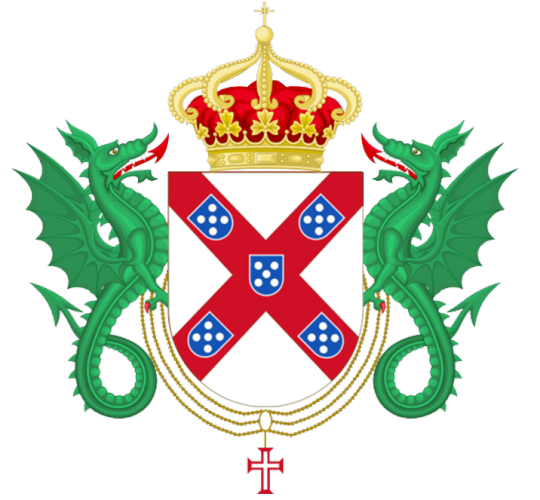
The House of Bragança originated with Afonso I,

an illegitimate son of King João I of Portugal,
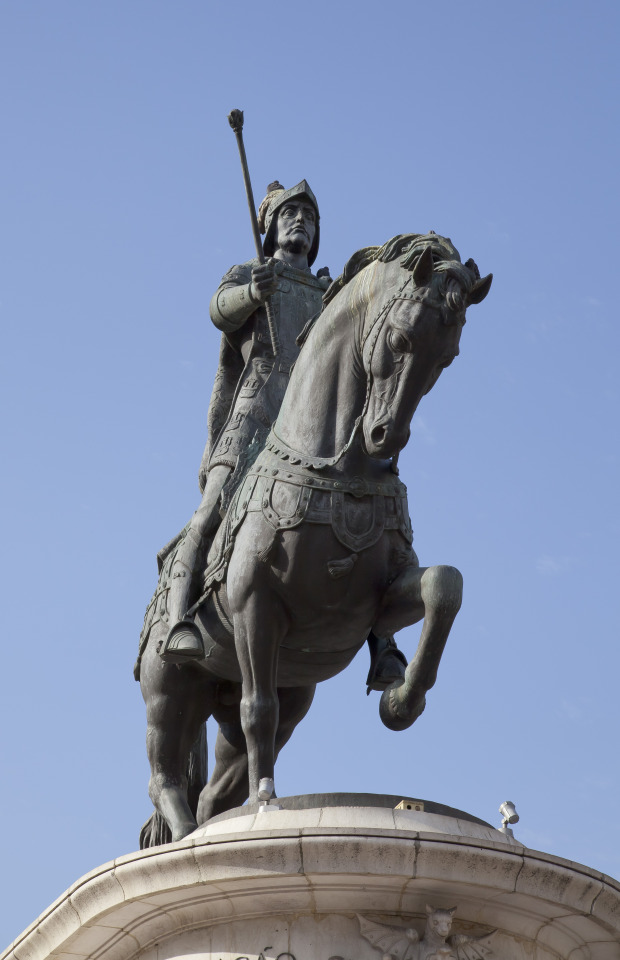
founder of the House of Aviz, and Inês Pires. Though Afonso was illegitimate, his father valued and cared for him a great deal, demonstrated by his arrangement of Afonso's marriage to Beatriz Pereira de Alvim,
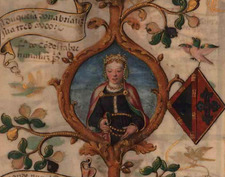
daughter of Nuno Álvares Pereira,
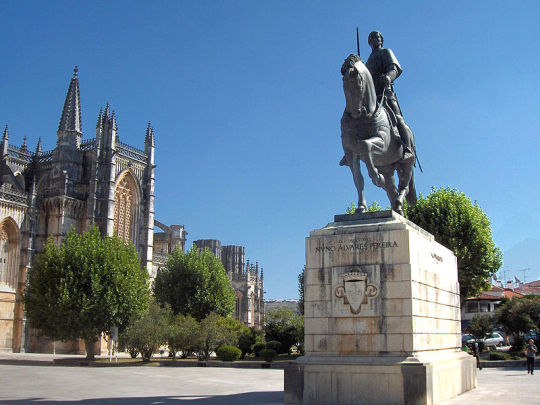
Portugal's most important general and a personal friend of King João I. As well as increasing his social status by his marriage into a well-established house, Afonso also became the eighth Count of Barcelos, an honour ceded to him by his father-in-law, who had been made the seventh count by João I.
With his newly consolidated place in the nobility of Portugal, Afonso commenced what would be a highly successful political and social career. In 1415 he took part in the Conquest of Ceuta, alongside his father, his brothers, and the leading members of the nobility and military. By the time of his father's death in 1433, Afonso had won favour with his brother, King Duarte I and the rest of high Portuguese society. With his brother's premature death in 1438, a regency was established for Afonso's nephew, the 6 year old King Afonso V, under the leadership of the king's mother, Leonor of Aragon, and later Afonso's brother, Infante Pedro, Duke of Coimbra. The Duke of Coimbra's regency, however, soon proved unpopular and Afonso quickly became the King's preferred advisor. On 30 December 1442, the Duke of Coimbra, still the King's regent and thus acting in his name, created Afonso as the Duke of Bragança, as a gesture of good will and reconciliation between the two brothers. Afonso's elevation to the dukedom, the highest level of nobility, marked the foundation of the House of Bragança, which was to become a key family in Portuguese history.
As a result of the hard work and success of Afonso I, his children all secured successful positions and lived privileged lives. Afonso I's first son, Afonso of Bragança, was a prominent member of the nobility, having been ceded, by his grandfather, Nuno Álvares Pereira, the lucrative and powerful title of Count of Ourém, in 1422. He was an accomplished diplomat, and served as the king's representative at the Council of Basel in 1436, and the Council of Florence in 1439. In 1451, the Count of Ourém was made Marquis of Valença and escorted Infanta Leonor of Portugal to her husband Frederick III, Holy Roman Emperor. Later, in 1458, he participated in the capture and conquest of Alcácer-Ceguer. The Marquis of Valença, however, died in 1460, one year before his father and therefore did not succeed him. Afonso I's first daughter, Isabel of Bragança,

married Infante João, Lord of Reguengos de Monsaraz, thus relinking the House of Bragança to the Royal House of Portugal. Isabel's strategic marriage proved successful, and produced four children, whose descendants would be some of the most important in Iberian history. Afonso I's last child and successor, Fernando I, Duke of Bragança,
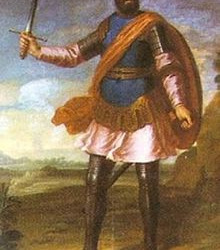
continued his legacy of prominence in the military and society.
When Fernando I was born, in 1403, his grandfather, Nuno Álvares Pereira, ceded him the title of Count of Arraiolos. Fernando became an accomplished military man, participating in various Portuguese imperial campaigns. Though Fernando I was a popular and powerful member of the nobility, he did not always find himself in the favour of the king, most notably exemplified when Fernando I openly declaimed King Duarte I, at the Portuguese Cortes, on the topic of the rescue and recovery of the King's brother, Infante Fernando, Lord of Salvaterra de Magos from the Moors. However, Fernando I became a favourite of both the royal and imperial government and of King Afonso V, earning him the position of Governor of Ceuta and the titles of Marquis of Vila Viçosa and Count of Neiva.
Fernando I's children, by his wife, Joana de Castro, Lady of Cadaval, continued to enlarge the influence of the House of Bragança. Of his nine children, all six who survived to adulthood established themselves either through positions or marriages, though the actions of King João II would seek to weaken their influence. Fernando I's first son and successor, Fernando II,

was initially a bright and popular nobleman, but his conflict with King João II would see his and the House's downfall. His second son, João of Braganza, 1st Marquis of Montemor-o-Novo,

was an accomplished military man and was made Constable of Portugal. Fernando's third son, Afonso of Bragança, became a popular nobleman of society and was made 1st Count of Faro. The Duke's fourth son, Álvaro of Bragança, inherited the fiefs of his mother, becoming the 5th Lord of Ferreira, 4th Lord of Cadaval, and 1st Lord of Tentúgal. Fernando's eldest surviving daughter, Beatriz of Bragança, married Pedro de Meneses, 1st Marquis of Vila Real. Fernando's last surviving child, Guiomar of Bragança, married Henrique de Meneses, 4th Count of Viana do Alentejo. Ultimately, however, Fernando I's children and grandchildren would suffer great difficulty under the reign of King João II.
By the tenure of the third duke, Fernando II, the House of Bragança was undoubtedly one of the greatest noble houses of Portugal and Iberia as a whole. Fernando II continued the House's legacy of acquisition and gained the title of Duke of Guimarães. To the Duke and the House's downfall, however, King João II's reign concerned itself with the royal consolidation of power and the diminishment of the nobility. In his mission to centralize power, the King executed many nobleman of the great houses of Portugal, alongside confiscating their properties and exiling their families. Fernando II, having been a prominent and powerful nobleman, was accused of treason and executed by King João II; the House's titles and properties were merged into the crown and its members exiled to Castile.
Due to their father's misfortunes, Fernando II's children, from his marriage to Isabel of Viseu, daughter of Infante Fernando, Duke of Viseu and Beja, initially had a tumultuous childhood; but King João II's successor, King Manuel I, who had previously himself been the Duke of Beja, chose to forgive the House and re-grant them all their properties in exchange for their loyalty. Fernando II's oldest surviving son and successor, Jaime I,
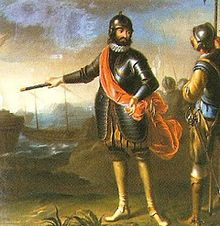
returned to Portugal and reestablished himself at Vila Viçosa, the former seat of the Dukes. Fernando II's only other surviving son, Dinis of Bragança, married Beatriz de Castro Osório, Countess of Lemos, and had four children with her.
Jaime I's tenure as Duke of Bragança was one of restoration and grandness. Upon his return to Portugal from exile, Jaime took possession of the House's formerly confiscated properties. In order to establish a new image for the House, he ordered the construction of a new seat for the House, which would become one of the largest palaces in Iberia, the Ducal Palace of Vila Viçosa.

Jaime I's restoration also continued with the House's relations with the King, Jaime I having becoming a favourite of King Manuel I and even once his temporary heir. The Duke also had his share of scandal, having funded the conquest of the city of Azamor, for the royal crown as, as punishment for his ordering the murder of his first wife, Leonor Pérez de Guzman, daughter of Juan Alfonso Pérez de Guzmán, 3rd Duke of Medina Sidonia.
The children of Jaime I, both the two first children by his first wife, Leonor of Pérez de Guzman, and the later eight children by his second wife, Joana of Mendoça, all saw successful lives under the restored House of Bragança. Jaime I's first daughter, Isabel of Bragança,

married Infante Duarte, Duke of Guimarães,
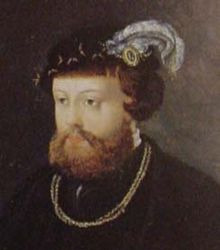
and had three children, while his first son and successor, Teodósio I,

was a successful prince of the Portuguese Renaissance. Five of Jaime I's children, Jaime, Maria, Fulgêncio, Teotónio, and Vicência, all entered into religious orders. The Duke's second daughter, Joana of Bragança, married Bernardino de Cardenas, 3rd Marquis of Elche, and his third daughter, Eugénia of Bragança, married Francisco de Melo, 2nd Marquis of Ferreira. Jaime I's only other son, other than Teodósio I, to not enter into the church, Constantino of Bragança,
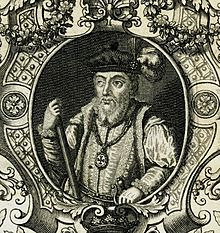
married Maria de Melo, daughter of D. Rodrigo de Melo, 1st Marquis of Ferreira, but had no children. Constantino was famed as a great officer of the Portuguese Empire, having served as the Viceroy of Portuguese India and Captain of Ribeira Grande, among other positions.
The fifth Duke, Teodósio I, is remembered for being the personification of the Portuguese Renaissance. A patron of the arts and scholarly noble, Teodósio I maintained the prestige of the House of Bragança, although not leaving a significant mark on the House's history. The Duke notably ceded the Dukedom of Guimarães to Infante Duarte of Portugal as the dowry of his sister, Isabel of Bragança.
Teodósio I's first son, Jaime of Bragança, died before he could inherit his father's titles, fighting alongside King Sebastião I at the Battle of Alcácer Quibir. The Duke's only daughter, Isabel of Bragança, married Miguel Luis de Meneses, 1st Duke of Caminha, though their union had no issue. Teodósio I's last child and successor, João I,

lived a very different life from Teodósio I's calm and relatively peaceful tenure, having been involved in the controversies of the Portuguese succession crisis of 1580 and the subsequent War of the Portuguese Succession.
João I's tenure as Duke was one intertwined with controversy and intrigue. Having been married to Infanta Catarina, daughter of Infante Duarte, Duke of Guimarães, and thus a grandchild of King Manuel I, during the succession crisis of 1580, the couple pressed their claims to the Portuguese throne. Though Infanta Catarina was a popular claimant, her Habsburg cousin was eventually crowned Philip I of Portugal and the Iberian Union was established. In an attempt at reconciliation with the Brigantine House, King Philip I renewed the title of Constable of Portugal, which João I had held previously, to the Duke's first son, Teodósio II,
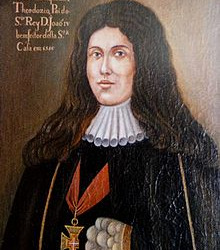
alongside other title and land grants to the Duke and the House.
João I's daughters, Maria, Serefina, Querubina, and Angélica, were some of the most eligible ladies of Portugal and all Iberia, though the only one to marry was Serefina of Bragança, who married Castilian Juan Fernandez Pacheco, 5th Duke of Escalona. The Duke's oldest son and successor, Teodósio II, famously fought in the Battle of Alcácer Quibir at the age of ten and later became an accomplished general. João I's second son, Duarte of Bragança, was made 1st Marquis of Frechilla, and the Duke's third son, Alexandre of Bragança, became Archbishop of Évora, both receiving their titles and many concessions from King Philip I when the monarch was making amends with the House of Bragança. Unlike his other sons, João I's last son, Filipe of Bragança, died without marriage, children, or titles.
The seventh Duke, Teodósio II, became famous at a young age, having been made page to King Sebastião I and having marched into the Battle of Alcácer Quibir, alongside the King and his uncle, Jaime of Bragança, at the age of ten. Teodósio II later pledged his allegiance and became a faithful countryman to the Philippine Dynasty, having even defended Lisbon against King Philip I's rival claimant to the throne, António, Prior of Crato, who had been acclaimed, by his supporters, as King António I of Portugal. In recognition for his military prowess, Teodósio II was made Constable of Portugal. The Duke's support and service to the Philippine Dynasty, earned the Braganças more lands and titles and, by 1640, the House had amassed around 80,000 vassals, alongside numerous churches, orders, and institutions under its patronage.
In 1603, Teodósio II married Ana de Velasco y Girón,

daughter of Castilian Juan Fernández de Velasco, 5th Duke of Frías, and had four children with her. The Duke's first son and successor, João II, raise the House of Bragança to new heights of power, having launched the Portuguese Restoration War and been acclaimed King João IV of Portugal, thus installing the House as the ruling dynasty of Portugal. Teodósio II's second son, Duarte of Bragança, was made Lord of Vila do Conde and became a diplomat, serving at the court of Ferdinand III, Holy Roman Emperor,
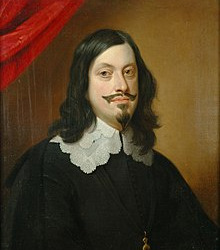
but later died a prisoner as a cost of the Restoration War. Teodósio II's two other children, Alexandre and Catarina, both died without children, titles, or marriage.
Throne of Portugal
By 1640 the wise policies of D. Philip I in respect of Portugal were long past. The country was overtaxed, Portuguese colonies were left unprotected, and the King Philip III of Portugal
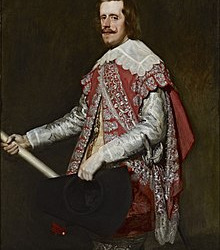
no longer had the trust or support of most Portuguese nobility. He was especially loathed by the powerful Portuguese guild of merchants. Portugal, like the rest of Philip's kingdoms, was on the verge of rebellion.
The eighth Duke of Bragança, D. João II of Bragança, had inherited the claim of his grandmother, Infanta Catarina of Portugal, and the remoter claim through of his grandfather João I of Bragança. Because of his claims, the discontent Portuguese nobility asked João II to lead their restoration as their king.
According to court historians, D. João II was a modest man without particular ambitions to the crown. Legend says that his wife, Dona Luisa de Guzmán, daughter of the duke of Medina-Sidonia, urged him to accept the offer, saying "I'd rather be queen for one day than duchess for a lifetime." He accepted the leadership of the rebellion, which was successful, and was acclaimed João IV of Portugal on 1 December 1640.
After the accession of the Braganças to the throne, the duchy was linked to the Crown. "Duke of Bragança" became the traditional title of the heir to the throne, together with Prince of Brazil and, later, Prince Royal of Portugal, much as Prince of Wales is in the United Kingdom or Prince of Asturias in Spain.
Under D. João's sons D. Afonso VI and D. Pedro II, the Portuguese colonial empire, part of which was lost during the Spanish occupation, was restored and expanded, bringing new wealth to Portugal.
The zenith of the Bragança dynasty came with the long reign of D. João V (1706–1750), who ruled with grandeur and piety. The reign of D. José I, son of D. João V, was marked by the great earthquake, which struck Lisbon in 1755. The political genius of his reign was the 1st Marquis of Pombal. The end of the 18th century was characterized by stability, under the rule of Dona Maria I (1777–1816), who discharged Pombal at her accession. Unfortunately Dona Maria became psychologically unstable, displaying similar symptoms to George III of the United Kingdom
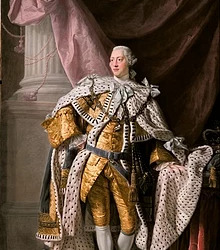
in his later years.
In 1808, faced with impending Napoleonic invasion, the Braganças transferred their royal court to the State of Brazil, Portugal's largest colony. Some time after they had crossed the Atlantic, a royal decree changed the status of Brazil from a Portuguese colony into kingdom alongside Portugal, and the United Kingdom of Portugal, Brazil and the Algarves was formed. In 1821, D. João VI, who succeeded in 1816, returned to Portugal.
D. Pedro, Prince Royal of Portugal, Brazil, and the Algarves, the eldest son of D. João VI and also regent in Brazil, sided with the Brazilian rebels in January 1822. He was acclaimed Emperor D. Pedro I of an independent Brazil in 1822, founding the Empire of Brazil. D. Pedro I ruled Brazil until 1831, when he abdicated in favor of his young son D. Pedro II,

and returned to Portugal to aid his daughter D. Maria II.
D. Pedro II, being only 6 years old at the time of his coronation, had a regency established. The regency would rule until 1840, when the Emperor turned 14 years old. His reign would last until 1889, when the Brazilian monarchy was abolished. His reign would see the abolition of slavery in Brazil, economic growth, and very long periods of tranquility and development in his empire.
In Portugal, D. Pedro I of Brazil became King as D. Pedro IV (1826), but no one wanted to re-establish the union of Portugal and Brazil. Pedro abdicated the Portuguese throne in favor of his daughter Princess Maria da Glória, then seven years old. D. Pedro's brother D. Miguel

was to act as Regent, and to marry Maria when she came of age. In 1828, Miguel instead proclaimed himself King of Portugal and repudiated the liberal constitution granted by D. João VI, trying to establish an absolute monarchy.
In 1828, Maria II was forced into exile by her uncle, the new King Miguel I. Her father D. Pedro IV of Portugal returned from Brazil, launched a successful military campaign, from the Azores, against Miguel I. He finally defeated and exiled Miguel I in 1834. Though exiled, Miguel would not give up his claim to the throne and would establish the Miguelist branch of the House of Bragança. The strategic marriages of his children to the various royal houses of Europe would earn him the nickname the "Grandfather of Europe".
On 7 September 1822, Dom Pedro of Bragança, Prince Royal of Portugal, Brazil and the Algarves, member of the House of Bragança, heir apparent to the Portuguese throne and Regent of the Kingdom of Brazil, declared the country's independence from the United Kingdom of Portugal, Brazil and the Algarves and was acclaimed Emperor of Brazil. On 12 October, the prince was acclaimed Pedro I, first Emperor of the newly created Empire of Brazil, a constitutional monarchy. In 1825, signing the treaty of Rio de Janeiro of this date, his father, King Dom João VI, recognized the independence of the new state, the former Portuguese dominion, now Empire of Brazil.
Pedro I encountered a number of crises during his reign. A secessionist rebellion in the Cisplatine Province in early 1825 and the subsequent attempt by the United Provinces of the Río de la Plata (later Argentina) to annex Cisplatina led the Empire into the failed Cisplatine War. In March 1826, João VI died and Pedro I inherited the Portuguese crown, briefly becoming King Pedro IV of Portugal before abdicating in favor of his eldest daughter, Maria II. The situation worsened in 1828 when the war in the south ended with Brazil's loss of Cisplatina, which would become the independent republic of Uruguay. During the same year in Lisbon, Maria II's throne was usurped by Prince Miguel, Pedro I's younger brother.
Other difficulties arose when the Empire's parliament opened in 1826. Pedro I, along with a significant percentage of the legislature, argued for an independent judiciary, a popularly elected legislature and a government which would be led by the emperor who held broad executive powers and prerogatives. Others in parliament argued for a similar structure, only with a less influential role for the monarch and the legislative branch being dominant in policy and governance.
The struggle over whether the government would be dominated by the emperor or by the parliament was carried over into debates from 1826 to 1831 on the establishment of the governmental and political structure. Unable to deal with the problems in both Brazil and Portugal simultaneously, the Emperor abdicated on behalf of his son, Pedro II, on 7 April 1831 and immediately sailed for Europe to restore his daughter to her throne.
Pedro I's successor in Brazil was his five-year-old son, Pedro II. As the latter was still a minor, a weak regency was created. The power vacuum resulting from the absence of a ruling monarch as the ultimate arbiter in political disputes led to regional civil wars between local factions. Having inherited an empire on the verge of disintegration, Pedro II, once he was declared of age in 1840, at 14 years old, managed to bring peace and stability to the country, which eventually became an emerging international power. Brazil was victorious in three international conflicts (the Platine War, the Uruguayan War and the Paraguayan War) under Pedro II's rule, and the Empire prevailed in several other international disputes and outbreaks of domestic strife. With prosperity and economic development came an influx of European immigration, including Protestants and Jews, although Brazil remained mostly Catholic. Slavery, which had initially been widespread, was restricted by successive legislation until its final abolition in 1888 by Princess Isabel.

Even though the last four decades of Pedro II's reign were marked by continuous internal peace and economic prosperity, he had no desire to see the monarchy survive beyond his lifetime and made no effort to maintain support for the institution. The next in line to the throne was his daughter Isabel, but neither Pedro II nor the ruling classes considered a female monarch acceptable. Lacking any viable heir, the Empire's political leaders saw no reason to defend the monarchy. Although there was no desire among the majority of Brazilians to change the country's form of government, republicans began pressuring army officers to overthrow the monarchy. After a 58-year reign, on 15 November 1889 the Emperor was overthrown in a sudden coup d'état led by a clique of military leaders whose goal was the formation of a republic headed by a dictator, forming the First Brazilian Republic. Throughout the coup Pedro II dismissed all suggestions put forward by politicians and military leaders for quelling the rebellion. The Emperor and his family were exiled to the Portuguese kingdom and France. Although there was significant monarchist reaction after the fall of the Empire, this was thoroughly suppressed, and neither Pedro II nor his daughter and heiress supported a forced restoration.
Maria II married Prince Ferdinand of Saxe-Coburg and Gotha. Head of the House of Bragança and recognized pretender to the Crown of Portugal since 1976. In 1835, Queen Maria II of Portugal married Prince Ferdinand of Saxe-Coburg-Gotha, later King Ferdinand II of Portugal. Despite the tradition of following the custom of patrilineal descent of royal houses, common throughout Europe, Article 5 of the Portuguese constitution of 1826 stated that "The Reigning Dynasty of the Most Serene House of Bragança Shall Continue in the Person of Lady Princess Maria da Glória, by the Abdication and Cession of Her August Father Lord Pedro I, Emperor of Brazil, Legitimate Heir and Successor of Lord João VI.".
Maria II was succeeded in 1853 by her son D. Pedro V, a hard-working reformer who died prematurely in 1861 due to cholera. D. Pedro V was succeeded by his brother D. Luís, as D. Pedro V had no children.
D. Luís I was succeeded in 1889 by his son D. Carlos I. Carlos I's popularity dramatically declined after an unfavorable deal from an incident known as the British Ultimatum, whereby the Portuguese Empire ceded its claim to territories (known as the Pink Map) between Portuguese West Africa and Portuguese East Africa to the British. Pursuant to his unpopularity, the monarchy became increasingly unpopular in the country.
King Carlos I was assassinated in 1908 together with his eldest son, D. Luís Filipe, Prince Royal of Portugal and Duke of Braganza,
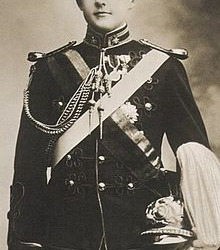
by republicans. His younger son, D. Manuel, Duke of Beja, survived the attack on his father and elder brother and became king as Manuel II, but was toppled two years later in the 1910 republican revolution. After the revolution, Manuel was forced into exile in England by the Portuguese First Republic, but he would continue to support his fatherland until his death.
Modern Braganças
After the revolution of 1910, King Manuel II settled in England until his death in 1932. He was childless, and descendants of Miguel of Bragança (the usurper of 1826) claimed the throne. In 1920–22, the two (of the now four) branches of the House of Bragança negotiated an alleged pact under which Manuel II named as his heir Duarte Nuno of Bragança,
grandson of Miguel. Duarte Nuno, now Duke of Bragança, remained the Bragança pretender until his death in 1976. In 1942, he married a great-granddaughter of Emperor Pedro II of Brazil, uniting the two lines of the House.
In 1950 Portugal repealed the law of exile against the Braganças, and D. Duarte Nuno moved to the country in 1952.
Duarte Nuno was succeeded as pretender by his son, Duarte Pio of Braganza (born 1945).
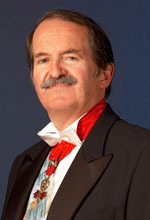
Duarte Pio served in the Portuguese Armed Forces and took the customary oath of allegiance to the Republic, but Portuguese monarchists recognize him as the pretender to the Portuguese throne. In 1995 he married Isabel de Herédia,

a Portuguese businesswoman and descendant of the Viscount of Ribeira Brava. He worked actively in support of the independence of East Timor from Indonesia.
Duarte Pio and Isabel have three children. Duarte Pio's oldest son is Afonso de Santa Maria, who bears the traditional titles of Prince of Beira (as heir apparent to the Portuguese pretender) and Duke of Barcelos (as heir apparent to the Duke of Bragança). He has a brother Dinis, Duke of Porto, and a sister, Infanta Maria Francisca.
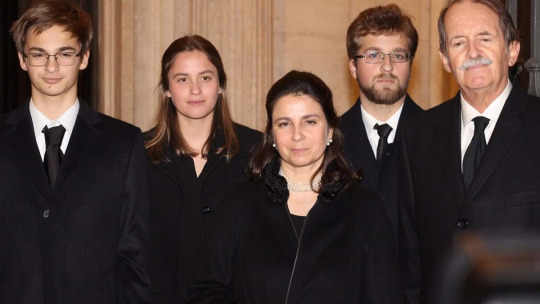
Maria Pia of Saxe-Coburg and Bragança,

who claimed she was an illegitimate daughter of King Carlos I of Portugal, began asserting that she was the heir to the throne from 1957. Allegedly, she adopted the Italian Rosario Poidimani, transferring her claimed rights to the Portuguese throne to him.
Monarchs of Portugal
João IV of Portugal - 1640 - King of Portugal and the Algarves; first Bragança monarch of Portugal
Afonso VI of Portugal - 1656 - King of Portugal and the Algarves; died without heir
Pedro II of Portugal - 1683 - King of Portugal and the Algarves; brother of Afonso VI
João V of Portugal - 1706 - King of Portugal and the Algarves
José I of Portugal - 1750 - King of Portugal and the Algarves
Maria I of Portugal & Pedro III of Portugal - 1777 - Queen and King of Portugal, Brazil, and the Algarves
João VI of Portugal - 1816 - King of Portugal, Brazil, and the Algarves; Titular Emperor of Brazil
Pedro IV of Portugal - 1826 - King of Portugal and the Algarves; Emperor of Brazil
Maria II of Portugal - 1826 - Queen of Portugal and the Algarves;
Pedro V of Portugal - 1853 - King of Portugal and the Algarves
Luís I of Portugal - 1861 - King of Portugal and the Algarves
Carlos I of Portugal - 1889 - King of Portugal and the Algarves; assassinated in Lisbon Regicide
Manuel II of Portugal - 1908 - King of Portugal and the Algarves; last monarch of Portugal
5 notes
·
View notes
Photo

HistóricoA ocupação da área onde hoje fica a cidade de Ouricuri ocorreu a partir de 1839, quando o juiz de direito da Comarca da Boa Vista, Alexandre Bernardino Pires, resolveu fixar residência no local, fugindo de uma peste denominada "Carneirada". Dois anos depois, foi construída ali uma capela sob a invocação de São Sebastião, em torno da qual o povoado cresceu.O primeiro nome da localidade foi Aricuri (palavra indígena...
1 note
·
View note
Link
3 bedroom villa with garage and swimming pool in Peniche, Leiria, Portugal
This house has:-3 bedrooms-Closed garage-Backyard with barbecue-Pool-Football field
YES...it's really true! This villa is located in São Bernardino municipality of Peniche. A little paradise in Portugal. Inserted in a private condominium, this villa offers everything you dream of in a home.
Imagine...arriving and parking in the private garage...walking up the stairs and you're indoors. In the meantime, go for a dip in the pool while the kids and friends are playing ball. Fantastic! Then come home and start preparing a barbecue in your private backyard. The meal can either be done in the backyard or in the kitchen, as the areas are really generous. After that, you can walk your pet through the condominium garden, where you can enjoy an excellent sea view!
After all this, night comes and uses the fireplace to comfort the whole family. 3 bedrooms, one en suite with fitted wardrobes and attic, restful sleep will always be a guarantee. The next day, wake up and still be able to do all this, because this house is the dream home!
195 000€
Nuno Pires
(+351) 935 083 270
0 notes
Text
Ao menos 555 pessoas com Covid morreram à espera de um leito de UTI desde o início de março no estado de SP

Neste segunda (5), capital paulista confirmou a sexta morte de paciente por falta de vaga para tratamento de alta complexidade. Homem de 77 anos estava internado no Hospital do Servidor Público Estadual. Profissional de saúde trata paciente com Covid em UTI do Hospital São Paulo, em São Paulo, no dia 17 de março.
Amanda Perobelli/Reuters
Ao menos 555 pessoas com Covid-19 ou suspeita da doença não resistiram à espera por um leito de UTI e morreram desde o início de março no estado de São Paulo. O levantamento é do G1 e da TV Globo.
Nesta segunda (5), foi confirmada a sexta morte de um paciente por falta de vaga em leito de alta complexidade na capital paulista.
A vítima é um homem de 77 anos, que estava internado no Hospital do Servidor Público. A família afirma que Seu José não recebeu atendimento médico correto e que o hospital priorizou leitos de UTI para o atendimento de pacientes mais jovens.
Sumaré, na região de Campinas, ainda é a cidade do estado que registrou mais mortes na fila: ao menos 81. Seguida por Franco da Rocha, na Grande São Paulo, com 48, e Bauru, com 47 (veja lista completa abaixo).
Entre as vítimas, também há um menino de três anos e uma jovem de 25, sem doenças prévias, no interior do estado.
Os pacientes estavam cadastrados no sistema de regulação de transferências do estado, mas não resistiram até chegar a vaga, de acordo com a Secretaria da Saúde.
Veja abaixo as cidades que tiveram mortes de pacientes na fila por vagas na UTI:
Bauru – 47
Buri – 12
Itaberá – 1
Angatuba – 2
Itapetininga – 2
Guareí – 5
São Miguel Arcanjo – 7
Cerqueira César – 3
Fartura – 1
Piraju – 2
Riversul – 2
Bernardino de Campos – 2
Mogi – 5
Bragança Paulista – 1
Araçatuba – 4
Campo Limpo Paulista – 1
Alumínio – 1
Franco da Rocha – 54
Taboão da Serra – 35
Ribeirão Pires – 40
Mauá – 13
Nova Granada – 5
Dracena – 4
Sumaré – 81
Urânia – 3
Fernandópolis – 3
Francisco Morato-29
Diadema – 18
Rio Grande da Serra – 7
São Carlos – 9
Tabapuã -1
Irapuã -1
Ribeirão Bonito – 1
General Salgado – 1
Nhandera – 1
Cabreúva – 1
Itajobi – 1
Joanópolis – 1
Santa Adélia -3
Alto Tietê – 1
Caieiras -18
Jandira -16
Poá -1
Santo Antônio da Posse -2
Mongaguá -13
Nova Europa- 1
Ibaté -1
Tambaú -1
Pitangueiras -3
Guararema -4
Guarulhos -19
São Paulo – 6
São Caetano do Sul – 11
Itapecerica da Serra – 27
Caieiras – 22
The post Ao menos 555 pessoas com Covid morreram à espera de um leito de UTI desde o início de março no estado de SP first appeared on Diário do Taboão.
from WordPress https://ift.tt/3sTSngZ
via IFTTT
0 notes
Photo

PORTO Ribeira década de 1950 Foto: Bernardino Pires https://www.instagram.com/p/CLt4nDiFYmB/?igshid=1w7juyv5y1sxc
0 notes
Photo

𝗕𝗣 𝗔𝗻𝗴𝗼𝗹𝗮 𝗹𝗮𝗻𝗰̧𝗮 𝗰𝗮𝗺𝗽𝗮𝗻𝗵𝗮 𝗱𝗲 𝗽𝗿𝗼𝗱𝘂𝗰̧𝗮̃𝗼 𝗱𝗲 𝗺𝗮́𝘀𝗰𝗮𝗿𝗮𝘀 𝗳𝗮𝗰𝗶𝗮𝗶𝘀 𝗽𝗮𝗿𝗮 𝗽𝗿𝗲𝘃𝗲𝗻𝗰̧𝗮̃𝗼 𝗰𝗼𝗻𝘁𝗿𝗮 𝗮 𝗖𝗢𝗩𝗜𝗗-𝟭𝟵 A bp Angola fez um financiamento inicial de $50.000,00 para apoiar a produção e distribuição de máscaras faciais de algodão, ajudar empresas locais, criar e executar uma campanha de conscientização para apoiar comunidades em risco em alguns municípios de três províncias. O projecto visa fornecer máscaras à comunidades para ajudá-los a fomentar boas práticas de higiene e cumprir com a inicitativa do Governo de limitar a transmissão comunitária do COVID-19. O projecto irá revitalizar alfaiates locais, que foram severamente afectados pela pandemia e enfrentam desafios sem precedentes para ganharem as suas vidas, pelo fecho dos seus negócios devido às medidas de distanciamento social. Por meio dessa iniciativa, a bp fornecerá tecidos a alfaiates seleccionados que produzirão entre 250 e 300 máscaras diariamente para serem distribuídas gratuitamente às comunidades com maior risco de infecção do COVID-19. Agradecemos a escolha da Angola Rescue como parceira para distribuir máscaras por todos pacientes e acompanhantes que se encontram no Hospital Pediátrico David Bernardino e na Maternidade Lucrécia Paim. Agradecer também a empresa consultora que concebeu o projecto e identificou a Angola Rescue - A JMJ, na pessoa de Sérgio Calundungo e Pedro Teixeira. Distribuímos as máscaras pelos vários serviços do hospital. daremos continuidade na semana que vai entrar. Quem já tem uma, recebe outra. Assim, quando tiver que a lavar, tem outra disponível. ------ Presenças Fátima Pires https://www.instagram.com/p/CBtOvlaHxBh/?igshid=lb0h3q92fzzq
0 notes
Text
Sanitização avança nos bairros de Niterói
Facebook
Twitter
WhatsApp
Email

Ao menos 12 bairros receberam ações de sanitização esta semana. Foto: Berg Silva/Prefeitura de Niterói
A Prefeitura de Niterói segue com as medidas de prevenção na cidade. Mesmo após mais de 70 dias de isolamento social, é imprescindível manter o cuidado com a higienização dos ambientes. Com isso, a sanitização de ruas e comunidades se torna ainda mais importante para combater o novo coronavírus.
Nos últimos dias, os caminhões pipas da Companhia de Limpeza Urbana de Niterói (Clin) percorreram os bairros do Caramujo, Jacaré, Boa Esperança, Largo da Batalha, Poço Largo e orlas do Gragoatá, Boa Viagem, Icaraí, São Francisco, Charitas, Itaipu e Piratininga.
O presidente da Clin, Luiz Carlos Fróes Garcia, destaca a importância desse trabalho contínuo pelas ruas de Niterói.
“Mesmo após já termos feito a sanitização por todas as principais vias da cidade, seguimos com os caminhões fazendo a limpeza com o ‘Sais Quaternários de Amônio de Quinta Geração’. Nessa nova etapa, estamos passando também pelas vias secundárias e entrada das principais comunidades. Nossa equipe trabalha dia e noite e já chegamos a todos os bairros de Niterói, proporcionando um ambiente mais higienizado para toda a população. Seguiremos atuantes para vencermos essa guerra contra o coronavírus”, explicou o presidente da Companhia.
O produto age como uma película que mata os micro-organismos que estão no local (vírus, bactérias, fungos e ácaros) e forma uma camada protetora que mantém a superfície desinfetada por semanas, dependendo da circulação de pessoas. A solução química é a mesma usada pela China e outros países da Europa para desinfecção das ruas.
Essa semana, diversos locais foram novamente higienizados. A equipe da Clin percorreu os bairros Boa Viagem, Icaraí, Gragoatá, São Francisco, Charitas, Centro, Engenho do Mato, Itaipu, Barreto, Fonseca, Caramujo, Baldeador, Santa Bárbara, Rio do Ouro e Maria Paula. O trabalho seguirá enquanto for necessário para manter as ruas de Niterói em boas condições de higiene e saúde.
Primeira etapa
Os trabalhos já foram realizados em todos os bairros de Niterói e também em grande parte das comunidades: 30 de Outubro, Abacaxi, Africano, Alarico, Alberto Laurentino /Sape, Arroz, Bela Vista Atalaia, Bela Vista/Sape, Beltrão, Bernardino, Boa Esperança, Boa Vista, Bomfim, Bonsucesso, Brasiliana, Bumba Velho, Buraco da Bacia, Caniçal, Cantagalo, Capim Melado, Caranguejo, Cascarejo, Castro Alves, Cavalão, Chácara, Cocada, Coelho, Coreia, Coronel Leôncio, Coruja, Cravinho, Cruz, Cutia, Dionisio Mendes, Dona Inês, Dona Zinha, Erasmo Braga, Estevão, Eucalipto, Facciotti/Sape, Fatima, Fazendinha/Badu, Formiga, Galinha, Grota, Guaporé, Herdy, Holofote, Iara, Ignácio Bezerra de Menezes, Igreja de Jurujuba, Igrejinha, Jacaré, Jonathas Botelho, Juca Branco, Lara Vilela 94, Maceió, Marcia Valéria, Makenze, Mams, Marítimo, Maruí, Mato Grosso, MIC (Morro da Ilha da Conceição), Monan, Morro da Luz, Morro do Estado, Morro do Pires, Nova Brasília, Oliveira Lima, Palácio, Palmeiras, Papagaio, Pátio da Leopoldina, Penha, Poço Largo, Ponte Velha, Preventório, Rato Molhado/Sape, Recanto das Garças, Ribeiro de Almeida (Rua 28), Rua 1, Rua C, D e F, Rua do Rumo, Sabão, Salinas, Santo Cristo, São Luiz, Sem Terra, Serrão, Silvino Pinto, Sítio Ferro, Souza, Souza Soares, Terreirão, Travs. Alice e Odete, Travessa da Fonte, Trav. Oto, Travessa 600, União, Vila Ipiranga, Vital Brasil e Zulu.
Publicado às 16h30
from Plantão Enfoco https://ift.tt/3cCAjyO
from WordPress https://ift.tt/2BrhVfk
1 note
·
View note
Photo

Não podia deixar de prestar homenagem a esse grande artista que se vai , que aprendi a conviver , cujas músicas marcaram a minha vida e da minha família , dos momentos únicos , das vezes em que nos encontramos , do amor pelo filho , irmãos e sobrinhos , pela genialidade , pelo ritmo, pela lembrança boa , pelos momentos que não voltam mais, lembro da casa de José Walter junto com Davi , Pablo Ticiano e Eric , lembro do orgulho que sentimos de estar perto de uma mente genial , uma maravilha de músico, estávamos aprendendo a viver . Família privilegiada de artistas e de muito , mas muito coração . Tinha ele como parte de minha família também e o orgulho que sinto e a nostalgia deixada são imensos. Imenso vazio. Lembro do meu pai lembrando quando ele foi em nossa casa. Quando ele foi tocar na Vila. Na casa do tio José Walter. Qdo encontramos em São Paulo. De Salvador. Das histórias do Davi com ele. Do quanto ele ajudava a todos. Da importância dele na MPB. Dos Novos Baianos. Dodô e Osmar. Tom Zé. Armandinho. Dos músicos dele. Da poesia. Do cordel. Mas acima de tudo da família. Acabou chorare. O céu está em festa. Meus sentimentos tio José Walter , Ivone Bernardino Pires, Pablo Moraes , Ticiano Pires, Eric , David Hernon Rosa Suzana Rosa Bianca Rosa e todos os demais familiares e amigos. Meu coração está apertado. Que Deus conforte a todos. https://www.instagram.com/p/B-8jtjjFwsM/?igshid=197w759df4taz
0 notes
Photo

FAMÍLIA DE JOVEM CONTESTA ATENDIMENTO NO HOSPITAL NARDINI Garoto sofreu queda e reclamava de dores na perna, mas foi submetido a cirurgia no apêndice MAUASP.ORG Uma queda corriqueira durante um jogo de futebol, fato comum na vida de um adolescente, acabou se transformando em uma série de eventos desagradáveis para a família de Roger Michel Neri Bernardino, 15 anos. Embora reclamasse de dores na perna direita, o jovem foi operado e teve o apêndice removido no Hospital de Clínicas Dr. Radamés Nardini, em Mauá. A família questiona a necessidade da cirurgia enquanto o equipamento alega que todo o atendimento foi orientado por resultados de exames. O garoto se machucou há cerca de um mês e, após dois atendimentos no Hospital São Lucas, de Ribeirão Pires, onde não conseguiu alívio para as dores na perna, foi internado em 21 de junho no Nardini. Após ser avaliado por uma junta médica, foi operado e teve o apêndice removido, mas o alívio para o problema original só veio em 18 de julho, com a drenagem de um abcesso na região lombar. Tio do jovem, o publicitário Fabio Franco, 51, explicou que antes de ser internado no Nardini o adolescente havia passado dois dias em observação em Ribeirão Pires. “Disseram que lá não havia recursos para o atendimento, por isso foi transferido”, explicou. Franco relatou que, após a cirurgia no apêndice, quando o médico passou no quarto para a alta, questionou sobre a dor na perna que o sobrinho continuava sentindo. Tomografia revelou, então, um abcesso na região lombar. Roger foi liberado e passou a tomar antibióticos. Seu quadro se agravou, com febre alta, e ele foi novamente internado em 11 de julho, com ainda mais dor na perna. “Só então colocaram o dreno para eliminar o abcesso”, relatou a mãe, Lerian Almeida, 33. Profissional de educação física, ela acredita que pelo foco de infecção estar na mesma região do apêndice, o filho tenha sido vítima de erro médico. “A dor irradiava para a perna. Pedi o prontuário dele e está anotado que ele chegou com náuseas e dores abdominais, mas ele não teve nada disso. Só passou a vomitar depois da cirurgia no apêndice, por conta dos remédios”, completou. Em nota, a FUABC (Fundação do ABC), respo (em MAUÁ) https://www.instagram.com/p/B0YqqcOhvLx/?igshid=m2wv9evlwe0z
0 notes
